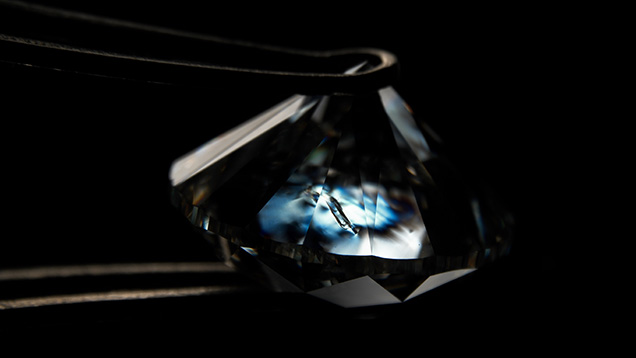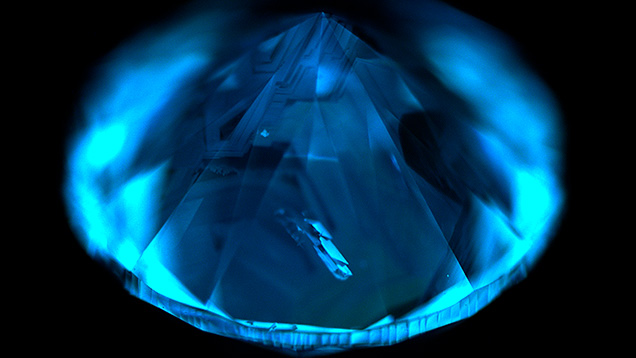Large Diamond Inclusion in Diamond

Recently, the authors examined a 2.01 ct Faint green round brilliant diamond with a fascinating diamond crystal inclusion that displayed a transparent, ghost-like appearance. Due to the large size of this nearly invisible crystal, the stone was given a clarity grade of SI2.

Photomicrography was used to document the features of this inclusion. Triangular etch features, also known as trigons, were seen on the inclusion (figure 1). These are typically natural growth markings of diamonds, confirming the inclusion as diamond. The diamond crystal inclusion appeared to have sharp and easily recognizable faces. Images with cross-polarized light show strain between the inclusion and the host diamond (figure 2). A DiamondView image also reveals the diamond crystal inclusion (figure 3).

Generally, the beauty and value of a diamond increase with the absence of inclusions. Yet the presence of a diamond inclusion gave this diamond a certain distinction, which in the authors’ opinion added to its beauty and value.



